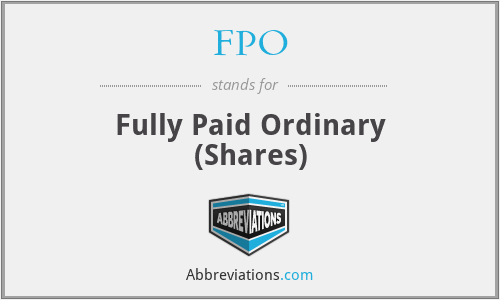Table Of Content

One of the is to communicate clearly with your team or client about the purpose and placement of FPO elements. This can help avoid any confusion or misunderstandings down the line and ensure that the final content or image is seamlessly integrated into the design. Additionally, it’s important to use high-quality and relevant FPO content to provide a clear representation of the final product. By following these best practices, you can streamline the design process and deliver outstanding results.
How to Create a Shutdown Timer in ...

The bleed area refers to the extra space around the edge of each page which allows for printing errors and ensures that there will be no white edges after trimming. Margins refer to the blank space between content elements on each page while gutters refer to the blank space between columns of text on each page. Relevance of FP to design lies in its impact on packaging aesthetics, functionality, and sustainability. Designers need to understand the unique characteristics of flexible packaging materials and techniques to create visually appealing and functional designs. By incorporating features like resealable closures, easy-open mechanisms, or innovative shapes, designers can enhance the user experience and differentiate their products in a crowded market.
FPO: What It Is And How To Use It In Graphic Design
This helps create a cohesive visual experience and gives clients and team members a better understanding of the typography choices in the design. Additionally, consider the legibility of the fonts used to ensure the FPO text is readable even if the actual content may differ. When using FPO text, it’s essential to ensure that it closely resembles the final content in terms of length and overall style.
The Future of FPO in Graphic Design
Similarly, a packaging design studio may use FPO elements to demonstrate different packaging options and layouts, enabling the client to make informed decisions on the final design direction. While FPOs are a useful tool in the graphic design process, it is important to note that they should not be used in the final, production-ready design. Instead, designers must ensure that all final images, text, and other elements are properly sourced and integrated into the final design. A “comp” is short for comprehensive and commonly refers to a mock-up of a brochure, package design or whatever item your graphic design company is creating for you.
As the actual content becomes available, replace the FPO elements with the final assets. This includes substituting placeholder images with high-resolution visuals and replacing FPO text with the actual copy. Ensure that the design remains cohesive and consistent, with the final elements complementing the overall aesthetic. When selecting FPO images, aim for visuals that closely resemble the final content in terms of subject matter, composition, and style. This ensures that the placeholders accurately represent the intended visual impact of the final design.
Common Types of Floor Plan Symbols
Images not to be printed are usually labeled with a large FPO across each one, so there is no confusion about whether they are to be used. FPO images are commonly used when you've been supplied actual photographic prints or another type of artwork to be scanned or photographed for inclusion. With modern publishing software and digital photography, FPO is a term that is mainly historical in nature; it's rarely used in everyday practice anymore.
The meaning of FOO in design and its impact on marketing
FPO providers offer a wide range of services, including data management, risk management, compliance, and customer support. This allows designers to focus on the layout, hierarchy, and overall user experience, while developers can start working on the technical implementation. By using FOO, designers and developers can work in parallel, saving time and ensuring a smoother handoff between design and development. For example, when designing a website, FOO can represent temporary text or images that will be replaced with the final copy and visuals. FP, in marketing, refers to “Flexible Packaging.” With the ever-changing consumer preferences and sustainability concerns, flexible packaging has gained significant traction in recent years.
Key Considerations When Utilizing FPO for Business Growth
FPO is a term that is commonly used in marketing, but not everyone knows what it stands for. FPO is often used in marketing materials such as brochures, flyers, and advertisements. FPO can also be used to create a consistent brand image across different marketing materials. By using the same FPO images and text in all of their marketing materials, marketers can create a cohesive brand image that is easily recognizable to their target audience. By creating multiple FPO designs, marketers can compare and contrast different options to see which one works best.
Manish Malhotra to Design Air India's 10000 Employees New Uniform - Zee Business
Manish Malhotra to Design Air India's 10000 Employees New Uniform.
Posted: Fri, 29 Sep 2023 07:00:00 GMT [source]
Familiarize yourself with the concept of FOO and its applications in different design contexts. Communicate the use of FOO to your team members, ensuring they understand its role in facilitating collaboration and streamlining workflows. Finally, establish guidelines and best practices for using FOO effectively, such as naming conventions or documentation processes. Packaging materials include various films, laminates, and foils that provide barrier properties, sealability, and customizable printing surfaces. These materials can be shaped, printed, and fitted to accommodate different product sizes and shapes. Additionally, flexible packaging allows for efficient transportation and storage due to its lightweight and space-saving nature.
It means that low-resolution artwork, or placeholder content are shown on the layout for the purpose of showing size and positioning only. The artwork, photos or barcode would be replaced with full-resolution or high-resolution images before the layout is sent to the printing company for printing. The images could also be labeled as low-resolution, typically less than 200 pixels-per-inch. “PMS” stands for Pantone Matching System, a proprietary and standardized color system used in a variety of industries including printing. When printing elements for a brand–especially with one or two solid ink colors–graphic design companies regularly specify solid PMS colors to ensure consistency.
While FPO is a useful tool in marketing, it is important to use it correctly to avoid common mistakes that can negatively impact your marketing efforts. In this article, we will discuss some of the common mistakes to avoid when using FPO in marketing. Final inspections are all completed, and the owner obtains a Certificate of Occupancy. Walls are the most common element in a blueprint and are represented by different types of lines.
Different architecture firms may propose a different fee breakdown on the architectural design phases. In this article we will be discussing the phases of design as defined by The American Institute Of Architects. The five phases of design are a way for Architects to break up the work they do into categories. In summary, folio is an essential concept in graphic design which refers to both the physical size and orientation of a printed page as well as how many pages are included in a publication. It is important for graphic designers to consider all aspects when designing for print such as bleed area, margins and gutters so that their work appears correctly once printed.
This ensures that the design accurately reflects the intended message and enables designers to make any necessary adjustments for optimal readability and visual impact. To make the most of FPO images, pay attention to their placement and sizing within the design. Experiment with different image placements, and consider how they interact with other design elements, such as text or graphics.
It is used to give the designer an idea of how the final product will look and feel. FPO images and text are usually low-resolution and are not intended to be used in the final product. Instead, they are replaced with high-quality images and text once they are available. FPO stands for “For Position Only” or “For Placement Only.” It is a term used to describe a placeholder image or text that is used in the design process before the final content is ready. Overall, FPO is an important part of many marketing strategies because it allows companies to create materials that are specifically designed for placement purposes.
AI algorithms can analyze content and generate more accurate and representative placeholders, minimizing the need for manual selection and insertion of FPO images and text. One notable trend is the increasing use of advanced prototyping tools and realistic mockups. These tools allow designers to create interactive and high-fidelity prototypes that closely resemble the final product. By effectively using FPO in mockups, designers can provide clients with an accurate representation of the design’s potential, even in the absence of finalized content. This collaborative approach promotes meaningful feedback and enables both designers and clients to iterate towards a final design that meets everyone’s expectations. Solicit input on the overall composition, color scheme, and visual impact of the design.
While they may be confusing to some clients or stakeholders, FPOs are a necessary part of the design process that ultimately leads to high-quality, polished designs. Avoiding these common mistakes with FPO will help ensure that the design process remains efficient, accurate, and aligned with the final design goals. By using FPO elements effectively and addressing these pitfalls, designers can create more impactful and successful designs. When presenting mockups with FPO elements to clients, clearly communicate that the content is temporary and will be replaced with the actual assets. This ensures that clients understand the intent of the design and are not misled by the placeholders. When sharing design concepts with clients, provide context and explanations for the choices made using FPO elements.

No comments:
Post a Comment